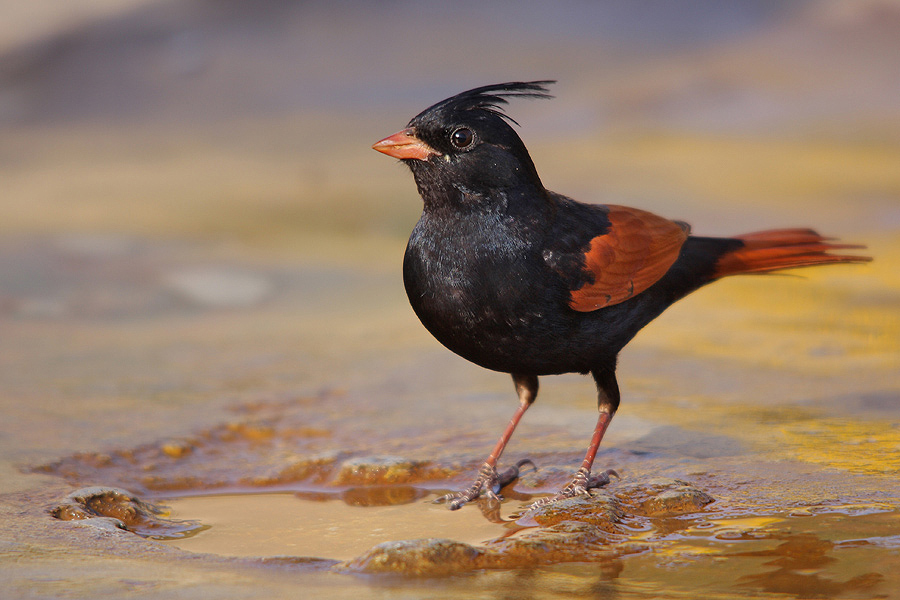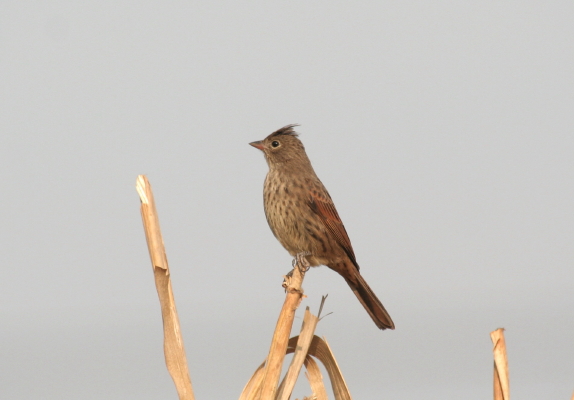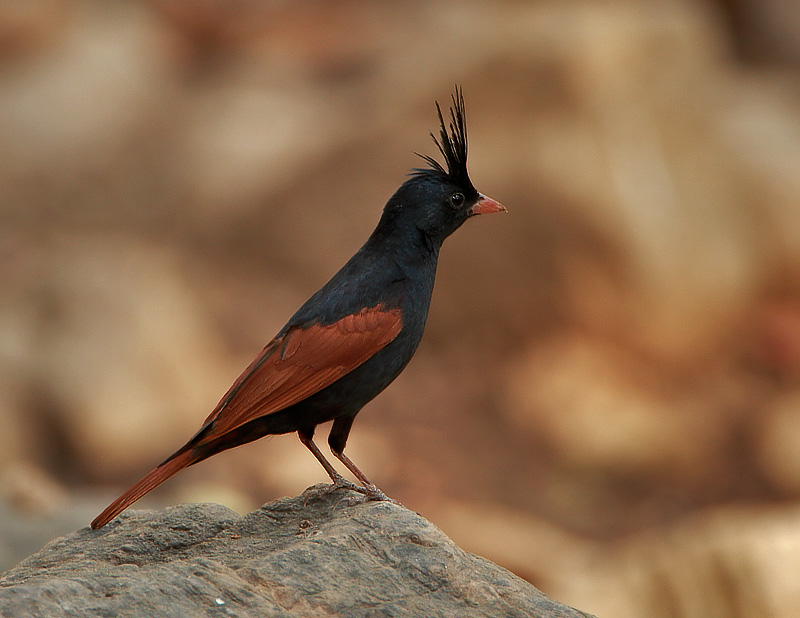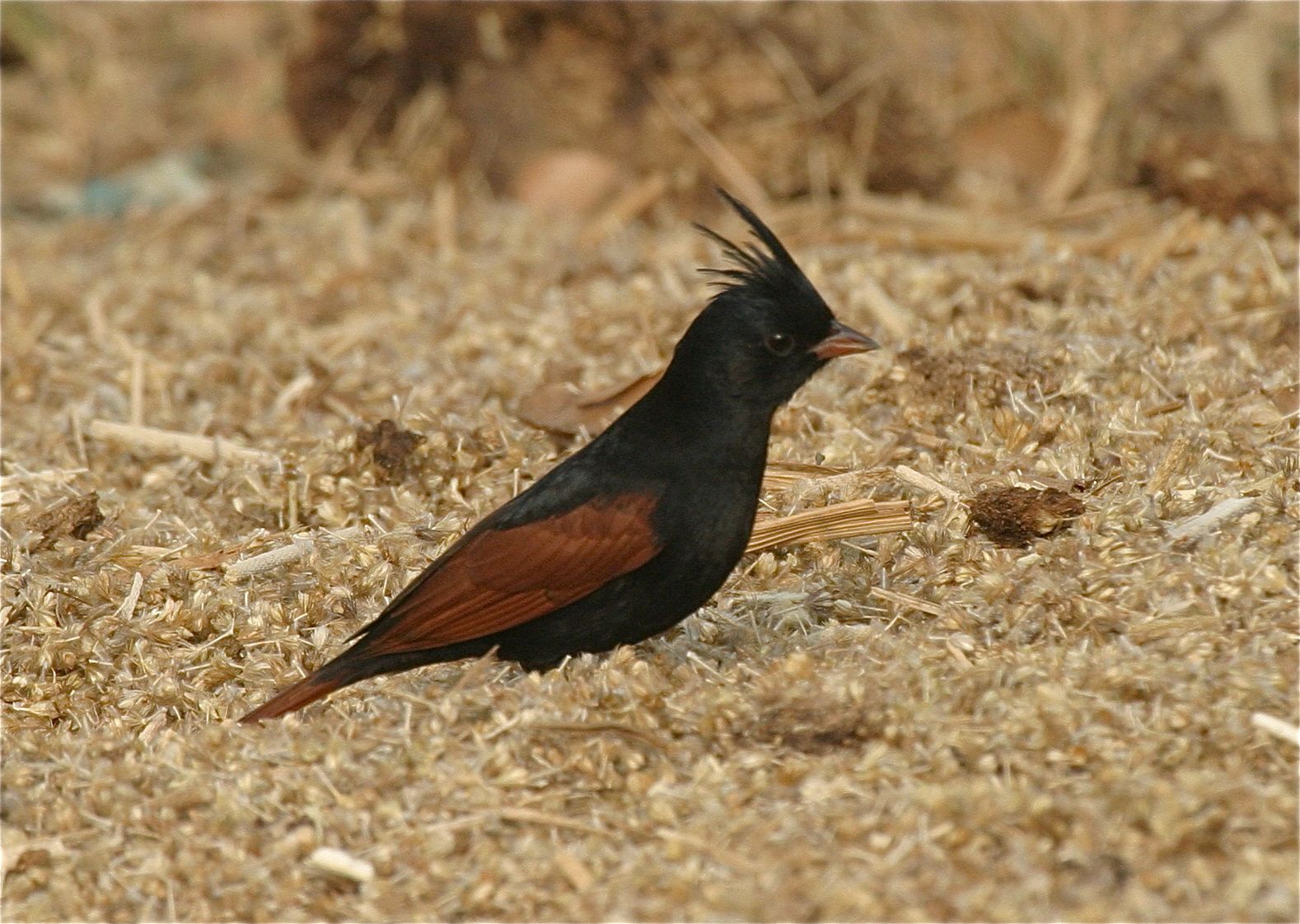
Melophus lathami
TAXONOMY
Emberiza lathami J. E. Gray, Canton, Kwangtung, China. Two
subspecies are little different and not recognized by all authors.
OTHER COMMON NAMES
French: Bruant huppй; German: Haubenammer; Spanish:
Pinzуn Capitуn.
PHYSICAL CHARACTERISTICS
6.5–7 in (16.5–17 cm); 0.63–0.88 oz (18–25 g). Sexes differ in
color. Males are blackish with a prominent crest and rusty
wings and tail, which is black-tipped; females are brown,
crested, and have rusty edges to the wing and tail feathers.
Juveniles are paler than females with thin streaks on the
breast.
DISTRIBUTION
M. l. lathami is resident in central, southeast, and southwest
China south to North Vietnam. M. l. subcristatus is resident
from western Pakistan east through northern India, Nepal,
Sikkim, Bhutan, and Myanmar. There is some altitudinal migration.
HABITAT
Inhabit rocky, grassy hillsides with sparse shrubs and dry rice
paddies in China. In southeast China they often nest in tea
fields.
BEHAVIOR
Gregarious outside of the breeding season, when they form
loose flocks.
FEEDING ECOLOGY AND DIET
Feed on the ground on seeds and invertebrates.
REPRODUCTIVE BIOLOGY
Monogamous. Nesting takes place between April and August
during the local wet season. The nest is a neat cup of woven
grass placed on the ground under vegetation or a rock or in a
crevice. They lay three to five eggs; no data on incubation and
fledging. Both parents feed the young.
CONSERVATION STATUS
Not threatened.
SIGNIFICANCE TO HUMANS
None known.
Photo Gallery of - Crested bunting




 Animalia Life
Animalia Life